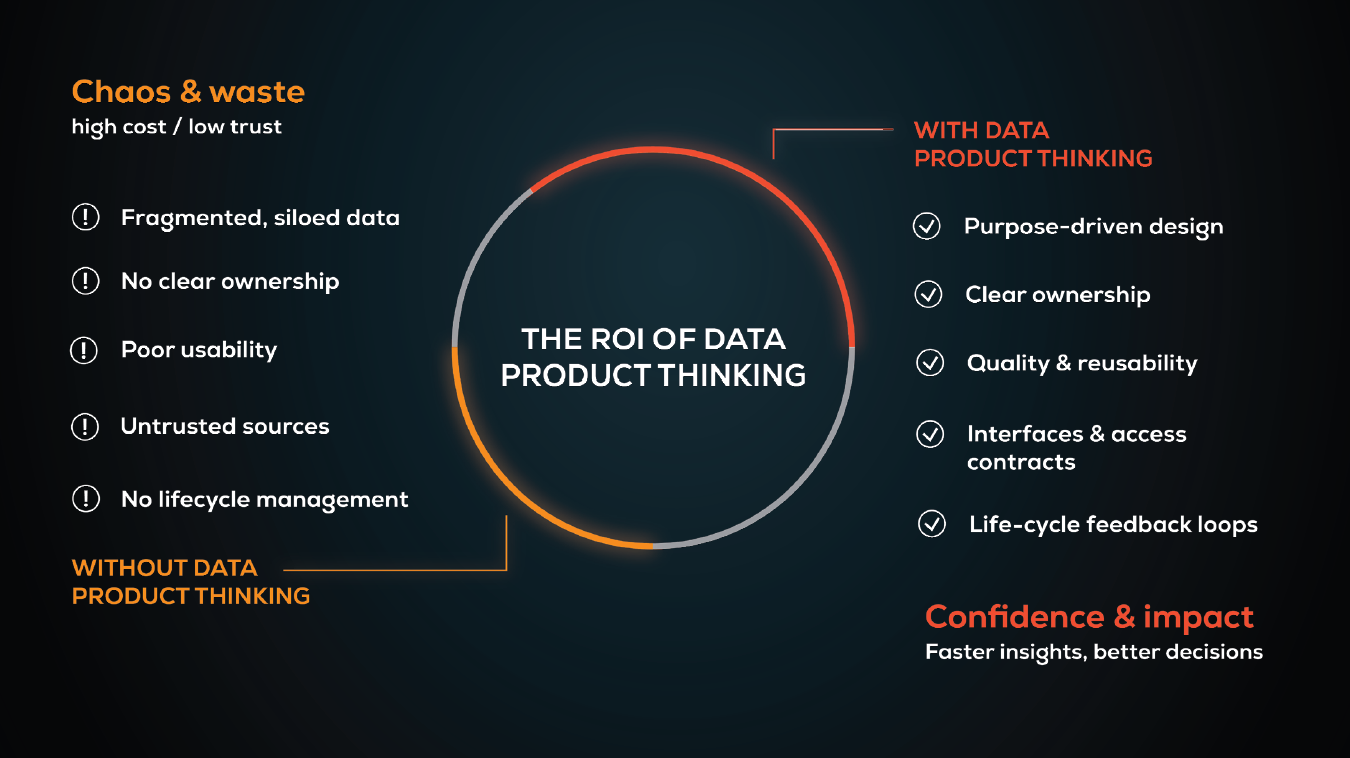Digital Excellence Report
From data chaos to data products: building confidence through design
.png)
Most organisations understand the power of data but struggle to use it with confidence. The problem is not a lack of information. It's the absence of structure, ownership and thoughtful design. When data is treated as a by-product, it becomes inconsistent, fragmented and difficult to trust.
That’s why a growing number of organisations are now taking a different approach by treating data as a product.
A data product is a designed, managed and user-centred asset that serves a clear purpose. It has an owner, a defined lifecycle and a specific audience. It can be found, accessed and reused easily.
When data is built and managed this way, it becomes reliable, valuable and ready to support confident decision-making.
From raw data to designed products
Adopting product thinking transforms how teams work with data. Instead of producing one-off reports or isolated data pipelines, they create reusable assets that evolve. These products follow the FAIR principles — findable, accessible, interoperable and reusable. Together, they form a connected ecosystem where data can be shared, understood and trusted.
This approach creates alignment between data teams and business functions. Everyone works towards the same goal: creating value through high-quality, well-governed data. The result is faster insights, stronger collaboration and decisions grounded in evidence rather than assumption.
The power of trust
When organisations apply data product thinking, trust grows naturally. Teams no longer waste time cleaning or reconciling data. Instead, they focus on interpretation, innovation and delivery. Business users gain confidence because the data they use is consistent, transparent and well maintained.

Data shifts from being a source of frustration to becoming a genuine strategic asset. It supports better decision-making, strengthens collaboration between business and technology and accelerates initiatives such as AI, analytics and automation.
Designing for opportunity
When data is designed, owned and built for use, it becomes an engine for insight rather than a source of friction.At AE, we see that the path to digital excellence begins with well-designed data. When ownership, usability and governance are embedded from the start, data simply works. It evolves from raw information into a reliable foundation for innovation and growth — one that enables organisations to act with confidence rather than hesitation.
The AE Digital Excellence Report 2026 explores how data product thinking builds trust, strengthens collaboration and transforms information into a lasting strategic advantage.









